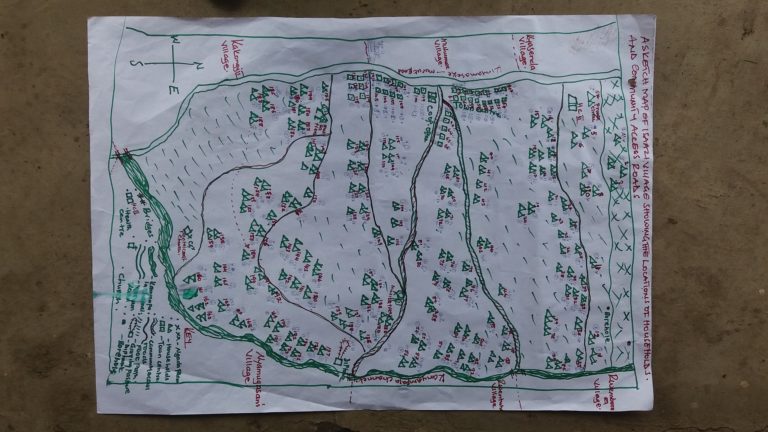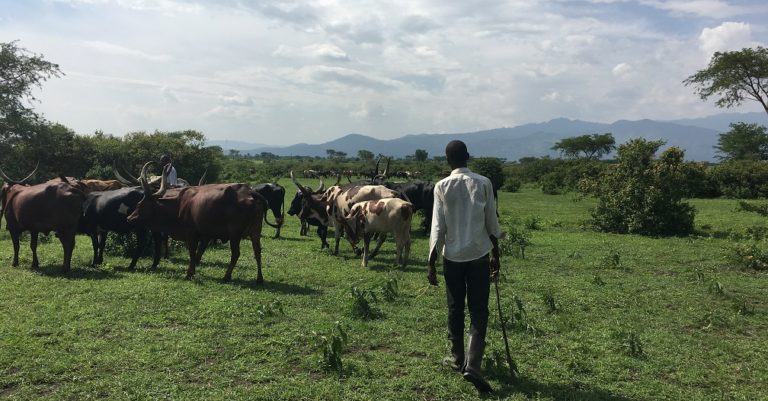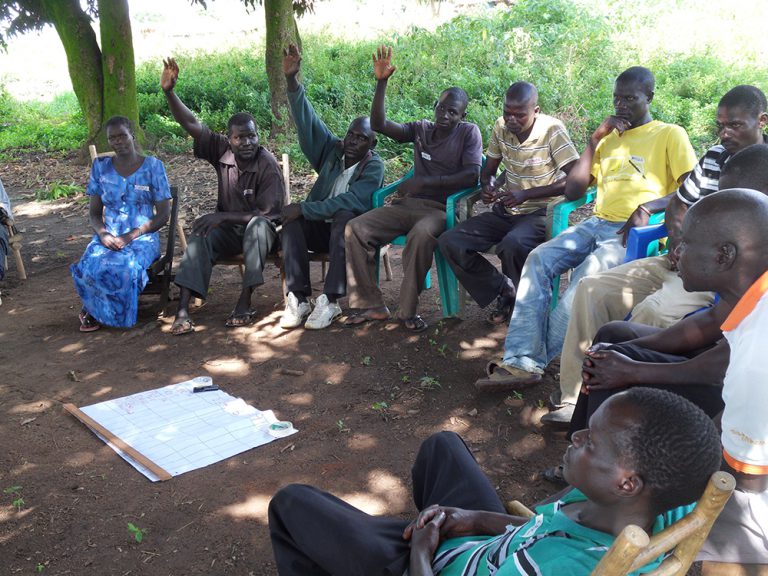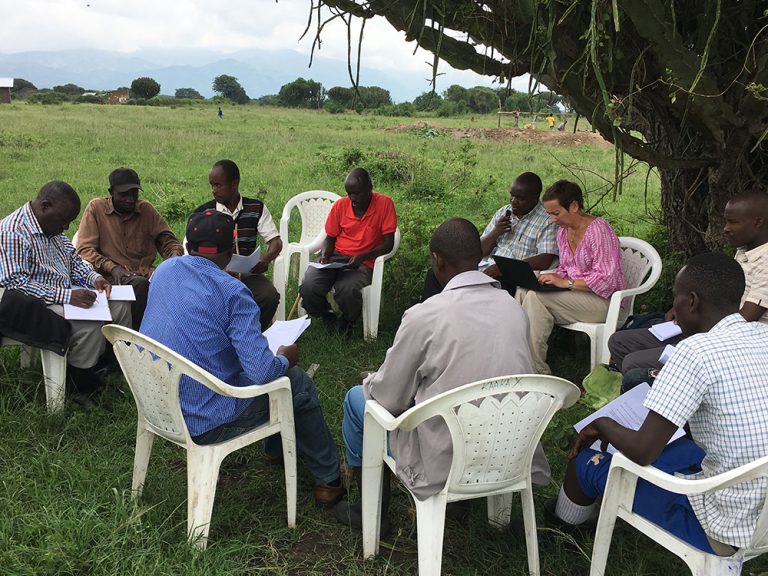This blog post was written by Erika Chenais, associate professor in infectious disease epidemiology at the National veterinary institute (SVA) and Klara Fischer, associate professor in rural development at the Department of Urban and Rural Development, SLU.

Participatory mapping with poverty ranking can be performed to assure that poorer people not are excluded from research in communities. Photo: Erika Chenais
Participatory epidemiology (PE) is a methodology initially developed in veterinary epidemiology research to collect epidemiological data in contexts where conventional quantitative data and statistics are unavailable. It has contributed to important new knowledge on animal disease in low-income countries, for example in the eradication of rinderpest* and the understanding of African swine fever transmission in the smallholder pig value chain.
PE has been praised for its ability to engage participants, visualise data and enable people with no or low levels of formal education to communicate their knowledge in ways that researchers can relate to and analyse. The veterinary application of PE stems from participatory methods and was first used in development cooperation to make projects better attuned to local needs and priorities and to investigate impacts of poverty. Historically PE has struggled with finding ways to simultaneously embrace the participation and knowledge of local livestock owners and applying methods and producing data that would be accepted and publishable in veterinary epidemiology journals. With increasing interdisciplinary engagement in recent years this has begun to change and there are now more and more studies that are guided by the participants own priorities and where suggested solutions are co-created according to these priorities and the local situation.
To stimulate this positive trend, and promote the furthering of PE as a participatory method we invited researchers from all disciplines interested in methodological development of PE to contribute to a special issue in Preventive Veterinary Medicine devoted entirely to this subject. The special issue is now published. The included articles stimulated methodological development and an academic debate about how power dynamics within communities and between participants and researchers as well as within the research community might impact information sharing and mutual understanding. Several of the published articles highlight the importance of that research embraces smallholders’ own priorities of animal health constraints, and call for an increased acknowledgement in the research community about that these priorities might not correspond with researchers’ priorities. Articles in the special issue show how embracing smallholders’ priorities can lead to more feasible and sustainable biosecurity measures, improved implementation of these, and in the end thus better disease control that can help smallholders improve animal health and escape poverty.

Individual interviews can be important for capturing perspectives of marginalised community members, such as herders. Photo: Erika Chenais
Moving forward, the articles indicate that the next step in the methodological development of PE, after successfully discussing participation, could be to call for greater interdisciplinarity. To be effective, interdisciplinarity needs to be present from project formulation and implementation to publication. Not only will this lead to methodological development, but more importantly to research outputs that are of greater local relevance and better scientific quality. The interest generated by these articles among social scientists and veterinarians interested in studying the societal aspects of animal diseases indicate that PE is developing in this direction.
You can read an introduction to the special issue here:
And all articles are reachable here:
Preventive Veterinary Medicine | Participatory Epidemiology | ScienceDirect.com by Elsevier
*Rinderpest, also known as cattle plague, is a contagious viral disease affecting cloven- hoofed animals (mainly cattle and buffalo).


